The A-Z of Generative AI and ChatGPT – Chapter C
Over the course of the past ten years or so, AI has gone from nowhere to everywhere. Our phones recognise our faces, self driving cars abound, customer churn and retention models are common place.
With AI skills forecast to be the most highly-demanded skills of the next decade you need to take your productivity, employability, and business to the next level by reading my carefully curated series on Generative AI.

Welcome to the A-Z of Generative AI where each week I will give you an explanation of every aspect of this exciting new technology beginning with the letter A and ending with the letter Z. You will learn all there is to know about Generative AI in this series to rapidly level up your job prospects, your productivity, and your business.
Each article will clearly explain Generative AI terms so you can master this hot technology. You will go from ZERO to HERO in a matter of weeks catapulting your knowledge and job prospects into a whole new stratosphere.
Don’t miss out. Grab a lifetime of learning in the fastest time possible and start reading.
📕 A-Z Of Generative AI and ChatGPT – Chapter A
📕 A-Z of Generative AI and ChatGPT – Chapter B

Generative AI, a subset of AI, has generated more interest than the launch of the iPhone and the World Wide Web combined in a much shorter time. For example, it took ChatGPT less than 5 five days to get a million users and reached 100 million users just two months after launching.
Why is Generative AI causing such excitement❓
Because of its transformative potential. And I don’t just mean its ability to help save lives, provide real-time personalisation and conversation, predict significant events, and more from data. Traditional AI models could already do that.
Traditional AI is narrow. It performs a single or specific task, such as processing a customer churn model.
Generative AI is broad. It can generate new images, music, speech, code, video, or text. It is a technology that people are excited to use as it enables them to search, work, learn, and engage in a human-like way that is more productive and creative.
The practical implications and applications of Generative AI are exciting the business world. It has immense potential to revolutionize any field where creativity and innovation are key which is a very different business shift than ever before.
Now that is exciting.


“Similar to Machine Learning or Computer Vision, Generative AI is a subset of the larger category of Artificial Intelligence. It combines the capabilities of other AI subsets in a way that allows the technology to recognize patterns and structures at scale. Rather than following a strict set of rules, the algorithm uses those patterns and structures to create. Rather than thinking of it as a ‘new’ technology, think of it as a specific use of Artificial Intelligence”
Ema Roloff, Principal Consultant, Roloff Consulting

Generative AI has changed the very nature of how businesses operate and deliver value. It can ‘generate’ text, speech, images, music, video, and computer code in response to a command.
When that capability is joined with a business’s own proprietary information then how businesses make money dramatically changes. Generative AI will drive efficiency and innovation across all industries at scale. What ChatGPT can enable will be greater than any existing software produced to date.

For example, today we have to spend inordinate amounts of time manually searching through applications for the most basic of data. Now, our conversational queries can be recognized and answered in milliseconds. For example, you can ask ChatGPT (and similar derivatives) to:
- List the contacts I have not called in the last 90 days.
- Create a table with my top 10 clients by customer life time value.
- Generate a professional email to [business leader] at [target company]. BUT first perform research on the [company], on the target [Business leader]. Then draft an email that incorporates both information from the research and from what it knows about the [Business leader] themselves for me to review.
- Write a humorous after-dinner speech on [TOPICS] for an event I am scheduled to be at in Dublin in September.
- What’s the next best product I can offer [customer A]?
But that is not what makes Generative AI exciting. Prompting offers the potential for simplicity, personalization, and democratization of all information known to humankind at minimal marginal cost.
Make no mistake, we have entered an exciting and tumultuous era of exponential technology and AI innovation. Where we work, and how we work, will change because the work we do will is changing with AI exponentially accelerating that change. We have reached a major junction in time.
“The development of AI is as fundamental as the creation of the microprocessor, the personal computer, the Internet, and the mobile phone,” he wrote. “It will change the way people work, learn, travel, get health care, and communicate with each other.”
Bill Gates
Governments, industries, businesses, and workers that rapidly adapt to this brave new AI world will thrive. Yet humanity needs to change. We need to urgently develop and enhance our people skills in ways that machines cannot replicate – empathy, intuition, critical thinking, adaptability, emotional and social intelligence – and learn to use AI technology to catalyse them to remain employable. Those that don’t simply will not survive.
AI won’t take your job, but someone who knows how to use AI surely will.
This series has been specifically created to help YOU learn Generative AI. That way you can stay one step ahead of the game ensuring you and your business not only survive but thrive in this mutable world.
Keen to learn more❓ Then keep reading.

Want someone to look at your business and teach you how to use Generative AI to get 40% more productivity in every role in your business ❓
Then book a FREE 30 minute introductory call so we can discuss your specific business’s Intelligent Automation, Data Analytics, Artificial Intelligence, Generative AI needs – click here.

1. Creativity in Generative AI 🅲
Creativity in Generative AI enables AI systems to exhibit artistic flair, generating novel content that captures the essence of human imagination. Similar to a talented painter, Generative AI can create original artwork, poetry, and even innovative product designs.
For example, a marketing agency might utilize Creativity in Generative AI to craft engaging social media posts. The AI system learns from past successful campaigns and generates captivating content that resonates with the target audience, leading to increased brand awareness and customer engagement.
- Prompt: “Draw inspiration from our brand’s core values and messaging to create compelling taglines that leave a lasting impression on customers.”
2. Conditional Generative Models 🅲
Conditional Generative Models empower AI systems to produce tailored content based on specific input conditions. Just like a skilled chef crafting personalized dishes, these models can generate custom responses, images, or recommendations based on provided information.
For example, an e-commerce platform could deploy Conditional Generative Models to create personalized product recommendations. By considering each customer’s preferences, purchase history, and browsing behaviour, the AI system generates product suggestions that align with individual tastes.
- Prompt: “Use Conditional Generative Models to generate personalized travel itineraries for our customers. Consider their travel preferences, budget, and desired destinations to create unique travel plans.”
3. Cross-Domain Generative AI 🅲
Cross-Domain Generative AI allows AI models to learn from diverse datasets representing multiple domains, enabling them to blend features and styles from different sources. Like a versatile musician fusing various musical genres, these models can generate content that transcends conventional boundaries.
For example, an architecture firm can employ Cross-Domain Generative AI to design innovative building facades. By incorporating architectural styles from different eras and regions, the AI system creates modern structures that pay homage to historical influences.
- Prompt: “Explore Cross-Domain Generative AI to design a series of hybrid furniture concepts for our interior design company. Combine elements from various design styles to produce unique and visually captivating furniture designs.”
4. Conversational Generative AI 🅲
Conversational Generative AI equips AI systems with the ability to engage in dynamic and context-aware conversations, akin to conversing with a knowledgeable and adaptive assistant. These models can comprehend user input and generate coherent responses, making interactions more natural and effective.
For example, a customer support centre could integrate Conversational Generative AI to handle customer inquiries. The AI system interacts with customers, understanding their questions, and provides helpful and accurate responses, streamlining the support process.
- Prompt: “Demonstrate your conversational prowess by acting as a virtual assistant for our customer service team. Respond to customer queries with informative and empathetic answers, ensuring a seamless customer experience.”
5. Creativity Boosting Techniques 🅲
Creativity Boosting Techniques in Generative AI enhance the AI model’s capacity for imaginative content generation. Just like a seasoned writer exploring new prompts and exercises, these techniques inspire AI systems to think beyond the obvious and produce more innovative outputs.
For example, a content creation agency could leverage Creativity Boosting Techniques to generate engaging blog posts. The AI model experiments with diverse writing styles and structures, resulting in captivating and thought-provoking articles.
- Prompt: “Apply Creativity Boosting Techniques to create a set of inventive advertising slogans for our marketing campaign. Push the boundaries of creativity to craft attention-grabbing and memorable slogans.”

Sponsor by DRUID AI . Get ready for an eye-opening journey that promises to redefine the very fabric of business. Join DRUID AI for “SYMBIOSIS II: Evolution of DRUID in the Generative AI Era“, an event that will open doors to new possibilities.

What’s in store for you:
✅ Dive into the world of Conversational Business Applications infused with the magic of Generative AI.
✅ Hear captivating real-life stories from our customers, showcasing the real impact of AI.
✅ Experience the wonders of ChatGPT as DRUID AI pushes the boundaries of LLM and business innovation.
📅 When? Date and Time: October 17th, 9:30 a.m. GMT
👩 Event link – here❗ Don’t miss out – join me.
6. Computational Creativity 🅲
Computational Creativity refers to the ability of AI systems to autonomously generate creative content, akin to a composer crafting mesmerizing symphonies. By combining data-driven insights and intuitive algorithms, Generative AI can produce original and captivating works.
For example, a music streaming platform could incorporate Computational Creativity in Generative AI to compose personalized playlists. The AI system could then curate playlists based on users’ listening history, moods, and musical preferences, providing them with an immersive and enjoyable music experience.
- Prompt: “Demonstrate your computational creativity by composing a series of personalized short stories for our publishing company. Tailor the stories to each reader’s interests and preferred literary genres.”
7. Continuous Learning in Generative AI 🅲
Continuous Learning in Generative AI empowers AI models to adapt and improve over time by assimilating new data and experiences. Like a lifelong learner, the AI system refines its understanding and creative abilities as it encounters more examples.
For example, an online learning platform might utilize Continuous Learning in Generative AI to enhance course content. The AI system integrates feedback from students, identifies areas of improvement, and updates course materials to provide more effective and relevant learning experiences.
- Prompt: “Embrace Continuous Learning to create dynamic and up-to-date investment reports for our finance company. Continuously update the reports based on the latest market trends and economic indicators.”
8. Collaborative Generative AI 🅲
Collaborative Generative AI involves multiple AI models working together synergistically to generate content. Just like a team of creative artists, these models complement each other’s strengths, leading to more sophisticated and diverse outputs.
For example, an architecture firm could employ Collaborative Generative AI to design sustainable buildings. One AI model optimizes energy efficiency, while another focuses on incorporating eco-friendly materials, resulting in environmentally-conscious and aesthetically pleasing designs.
- Prompt: “Collaborate with our environmental analysis AI system using Collaborative Generative AI to develop eco-friendly packaging solutions for our company’s products. Create designs that minimize environmental impact while maintaining practicality.”
9. Convolutional Neural Networks (CNN) in Generative AI 🅲
Convolutional Neural Networks (CNN) are a specialized type of deep learning model used in Generative AI to process and analyse visual data, such as images and videos.
These networks mimic the human visual system, enabling AI systems to generate realistic and detailed visual content.
For example, an interior design company employs CNN in Generative AI to create virtual room designs. The AI system processes a vast library of interior images and generates lifelike room layouts, allowing customers to virtually experience potential design options.
- Prompt: “ChatGPT, leverage Convolutional Neural Networks in Generative AI to generate a series of nature-themed wallpapers for our wallpaper manufacturing business. Ensure the generated wallpapers are visually stunning and natural-looking.”
Understanding the A-Z of Generative AI opens up a rich world of possibilities for business leaders. These concepts provide valuable insights into how AI can create new content, solve problems, and drive innovation across various industries. Embracing Generative AI can lead to enhanced creativity, improved decision-making and a competitive edge in the rapidly evolving data infused digital landscape.

Prompts can be chained together to enable you to obtain better and more accurate answers from ChatGPT.
- Insert first prompt: Give me a summary of this document [Paste in document text]
- Then modify the output: Use the summary above and rewrite this so it is can be easily understood by a 6th grader.
- Modify the tone: Adjust the tone and make it more formal.
- Modify the format: Convert the text into a presentation with 1 slide for each key point.
The clearer you are with your instructions the more likely you are to get what you ask for. Of course the above chain of prompts could be created as one prompt but this example shows how you might experiment with ChatGPT as you learn.

You can pretty much ask ChatGPT anything – so if you have an idea then run it through its prompt engine. You may just be wonderfully surprised with the answer. The more specific you can be in your prompting, the better.
‘A customer has rang in to say they are unhappy with our refund policy. They have posted a negative comment online. Draft a friendly response that addresses their concerns and offers a resolution to their problem so that we can keep them as a customer. This is the complaint they posts [‘ADD TEXT HERE’] and here is our refund policy [‘ADD REFUND POLICY TEXT HERE’].
Not only can call centre service staff reduce response times – the above can and will be entirely automated at some near point in time – you can adopt a consistent company persona to reply ensuring your staff deliver excellent service every time.
And remember that this is not the only example of where Generative AI can support contact centres. Contact centre is a business area where you need to urgently apply Generative AI to redesign roles. If you don’t, others will offer digital business service operations centres more faster and better than you.
That means business outsource service providers in particular MUST re-architecture their business models fast. India PLC and other economies that relied upon automation and wage arbitrage to resource outsource business service centres are now at significant risk.
For example, where I had 100 degree educated staff working in an outsource business service operations centre, in future I now need 40%-57% less staff when I employ Generative AI and intelligent automation to resource my business operating model architecture.
Working this through at country level – India PLC has 5.2 million software developers. Currently AWS CodeWhisperer claims to be able to make software developers 57% more efficient already.
That means India PLC may need under 3m software developers instead, as 3m can technically complete the work of 5.2m. However, not only does this make the remaining software developers more efficient – when code security, standards, and ethics are built in by default – it means they will produce code to far higher consistent standards more often.
Stepping forwards, this means that instead of trying to train 3m developers on new code standards, these can be coded into the Generative AI code model once. This means everyone can be upskilled simultaneously and instantly. And now everyone can code to higher standards immediately.
But what happens the other 2m+ coders? Your guess is as good as mine.

If you would like over 60 FREE Generative AI resources, then add your email address to this post and then ♻️ repost this article.
Once you have done that I will share a link to 60-plus documents and images that have been specifically curated to get you from AI ZERO to HERO in no time at all.

So I just opened ChatGPT and I asked it the following:
“Write JavaScript code with two functions, one which will accept a list of key-value pairs consisting of a country abbreviation and a population, and another that will return the population of a country requested in constant time.”
And this is what it gave in response:
Is this perfect code, no. But it is good enough at this stage to suggest anyone in any company may be able create code as the technology becomes more sophisticated.
Software engineers are expensive. This has made them the preserve of larger businesses. Now commercial code builder options exist which can augment and indeed replace the need for volumes of coders.
For example, AWS CodeWhisper claims to be trained on billions of lines of code and can generate code suggestions ranging from snippets to full functions in real time based on your comments and existing code. It can also scan your code to detect hard-to-find vulnerabilities, and get code suggestions to remediate them immediately.
AWS CodeWhisper can also help you align to best practices for tackling security vulnerabilities, such as those outlined by Open Worldwide Application Security Project (OWASP), or those that don’t meet crypto library best practices and other similar security best practices. This helps ensure better, more secure code is built to the best standards every time. And it can do this for 15 different languages making coders 57% more productive!
Now every business has the potential to create new business applications with fewer software developers than thought possible or previously economically possible.
Generative AI will make programming faster and easier, and for now companies will still need qualified software developers to validate the output Generative AI is presenting. However, the time is fast approaching where they will need a heck of a lot less than they currently employ. Great tech and great software engineers will be able to create more great code in less time, using for example GitHub Copilot, than in an either or situation.

Some of the best Generative AI articles from some of the best sources on the internet.
- McKinsey What is Generative AI?
- McKinsey 68 Page Special Report – The economic potential of generative AI: The next productivity frontier
- ERP Today Generative AI for the enterprise – Pascal BORNET and Kieran Gilmurray
- Linked to AI explainer videos by experts Learn about Artificial Intelligence (AI) | Code.org

Copilot is a term that can refer to several different things. One of the most popular references to Copilot is GitHub Copilot, an AI pair programmer that helps you write code faster and with less work than traditional coding.
Copilot draws context from comments and code to suggest individual lines and whole functions instantly. GitHub Copilot is powered by a generative AI model developed by GitHub, OpenAI, and Microsoft.
What does this mean❓ Technical and non-technical users can now ‘code’ at near zero cost. Copilot has the potential to revolutionise application code development as we know it unleashing a huge range of business productivity.
Another reference to Copilot is Microsoft 365 Copilot, which combines the power of large language models (LLMs) with your data in the Microsoft Graph—your calendar, emails, chats, documents, meetings, and more—and the Microsoft 365 apps can turn your words into potentially the most powerful productivity tool on the planet.
With an Copilot working alongside you, embedded in the Microsoft 365 apps you use every day—Word, Excel, PowerPoint, Outlook, Teams, and more— this has the potential to unleash creativity, unlock productivity, and uplevel skills of every worker in a business.
What does this mean❓ If something can be automated, it will be automated and made more clever with AI. This should not scare you. Why? A worker need no longer remain locked into one 8 hours a day role where they are probably only truly productive 1/3rd of the time. Instead, they can potentially become 200% to 600% more productive and efficient when augmented with Generative AI technology during those same hours.
When this value is shared, this means an employee and business can benefit immeasurably. This also opens the possibility or the employee sharing their agency with multiple businesses during those same hours opening a whole new array of wealth creating opportunities to them. For example, an individual could to opt for a multiportfolio career, to increase their value and worth by working for multiple companies simultaneously using the productivity potential of AI.

Need help understanding Intelligent Automation and Generative AI and how they apply to your business ❓
Then book a FREE 30 minute introductory call so we can discuss your specific Intelligent Automation, Data Analytics, Artificial Intelligence and Generative AI needs today – click here.

ChatGPT’s Code Interpreter is a new plugin feature that allows users to analyse data, test code, make charts, solve math problems, and more. It is a game-changing feature not just for programmers and data experts, but for general users as well. With the Code Interpreter plugin, you can upload files such as CSVs, Excel spreadsheets, and SQL databases to ChatGPT and get insights amazing from the AI.
Here are some of the things you can do with ChatGPT Code Interpreter:
- Upload data files and ask ChatGPT to analyse them.
- Write Python code and ask ChatGPT to execute it.
- Get explanations of how ChatGPT interpreted your code.
- Generate data visualizations.
- Perform data analysis.
- Make predictions.
ChatGPT Code Interpreter is a powerful tool that can be used for a variety of tasks. For example,
- You can upload a CSV file of customer data and ask ChatGPT to generate a bar chart showing the distribution of sales by product category or have it interpret patterns or trends in the data.
- You can write a Python script to calculate the Fibonacci sequence and ask ChatGPT to explain how the script works.
- You can ask ChatGPT to predict the outcome of a sporting event based on historical data.
If you’re interested in data analysis or visualization, I encourage you to check it out.

Need Data Analytics, Artificial Intelligence, and Generative AI Services❓
Need data analytics or data science work completed for you?
Or do you just want to learn more about Data Analytics, Artificial Intelligence and Generative AI?
If the answer to either of these questions is yes, then I have the course, knowledge, team, and expertise you need.
Then book a FREE 30 minute introductory call so we can discuss your specific business’s Intelligent Automation, Data Analytics, Artificial Intelligence, Generative AI, and operating model needs today – click here.
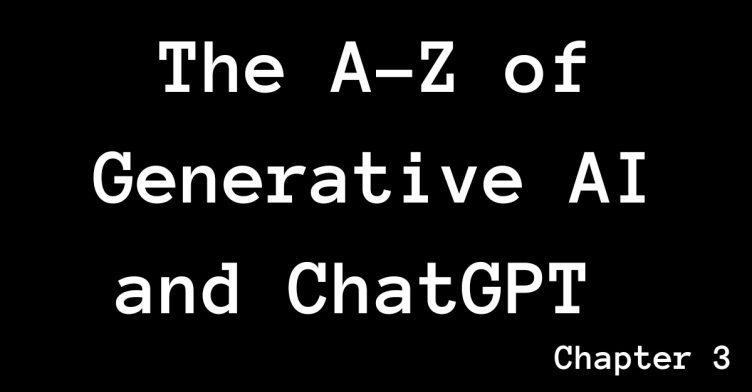


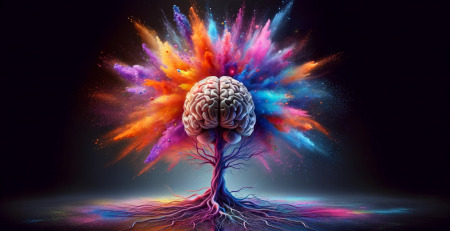

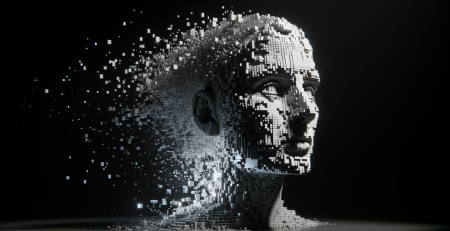

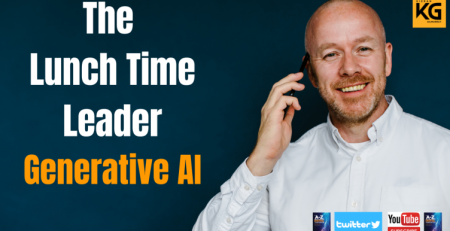



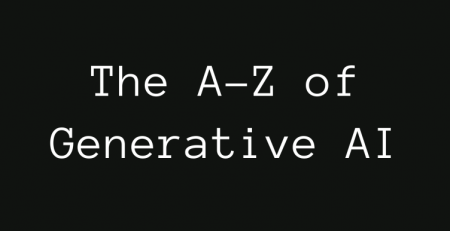
Leave a Reply